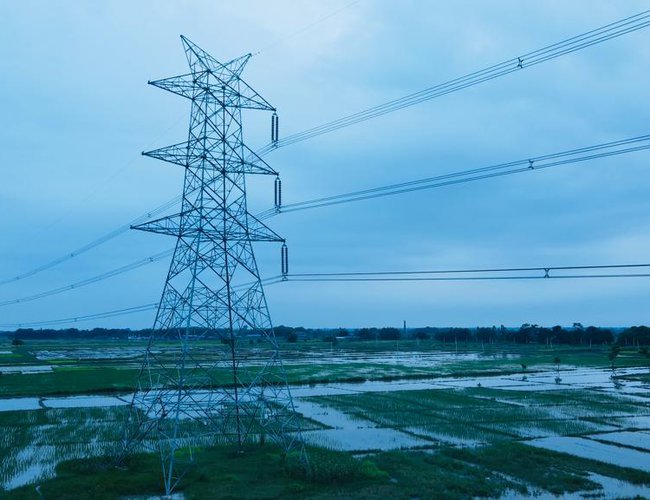
If someone asks me what two shortages are responsible for inhibiting the rapid hydropower growth in Nepal, I would like to lock my answer with money and market. Shortage of money is the product of limited priority for power sector by Government, whereas shortage of market is the product of limited space for renewable energy in the country’s energy mix and lack of tactful shrewdness in dealing with the geopolitical complexities of South Asia. At the root of both shortages lies politics of the country and policies stem from politics. So far as cross border market is concerned for selling surplus power by Nepal, it must catch up with the rhythm of geopolitics. Surplus power is such a power that demands export market for being surplus after meeting domestic demand in the country of its production.
In the past years, Nepal has already experienced the real flavor of power trading in the sense how the integration with the Indian market was found to be beneficial to Nepal after 400 kV Dhalkebar-Muzaffarpur Transmission Line paved the way for bidirectional power transfer between Nepal and India. Further, when two other 400 kV cross border transmission lines under construction – Dhalkebar- Sitamarhi and New Butwal-Gorakhpur - are commissioned, the scenario will change drastically with lots of positive outcomes through power export from Nepal.
Export market will continue to be inevitable to hydropower development unless Nepal succeeds in its plans to create extra power demand within the country during the wet season months by establishing highly energy-intensive industries or by setting up green hydrogen plants to consume surplus electrical energy. However, considering the unstable, uncertain politics and the lack of national tactics at diplomatic fronts, harnessing hydropower to an optimum capacity highly poses the risk of being stranded as a pendulum whose destiny is to swing between the two points of politics and geopolitics. As a result, as far as the country does not listen to the voice of economy with respect to hydropower, developers and investors will fear that such a situation would ultimately compel them to walk away from the sector. As such, Nepal is required to create more enabling environment for the private sector through risk sharing, policy refining and low-interest funding so as to scale up power generation for meeting national energy security as a whole.
Considering the lack of unanimous thoughts over resource utilization and power export and the lack of diplomatic acumen for dialoguing with neighboring countries as per the national interest, harnessing hydropower to an optimum capacity has highly embraced the risk of being stranded with the country’s destiny to swing between the two points of politics and geopolitics.
However, the need of achieving regional energy security, clean energy transition and the scenario of seasonal complementarities of demand and supply between Nepal and the neighboring countries of India and Bangladesh provides the best opportunity for Nepal to export its surplus hydro-electricity and boost the economic growth through cross border power trading. Of course, the importance of transmission connectivity should not be undermined in this regard.
An encouraging point towards achieving energy security by Nepal in future is that private sector has been wonderfully performing in the electricity generation sector, as is evident with the PPA figures of around 9,500 MW executed so far and around 10,000 MW in pipeline for PPA-signing between Nepal Electricity Authority (NEA) and Independent Power Producers (IPPs).As a result, the wet season months are characterized by power surplus which needs to be exported to the neighboring countries and, with some more projects still in the pipeline for commissioning within the remaining months of the ongoing fiscal year, an estimated projection indicates that the system needs power export of around 1,300 MW during the upcoming wet season. On the contrary, Nepal also relies on India for meeting its electricity demand during dry season months by more than 40 percent which accounts for around 11 hours of the day for uninterrupted power supply to its consumers.
The National Energy Crisis Alleviation and Energy Development Action Plan, 2072 had cast positive impacts on the power supply situation in the country, especially to remove load shedding through, inter alia, additional hydropower plants commissioned by the IPPs and some power import from India. But the Government forgot to prioritize developing storage hydropower projects for long-term energy security as envisaged in the Generation Mix proposed by it in 2016. Still, the story did not end there. The percentage allocated for storage projects in the Generation Mix continued shrinking in the subsequent policies. The White Paper - Energy and Water Resources Decade 2075-2085, issued by the Ministry of Energy, Water Resources and Irrigation in 2018 downsized the share of storage hydro projects in the original Generation Mix from the earlier 50% to 35 %. The share of the storage projects was further reduction to 25% as per the cabinet decision dated July 8, 2022. Nepal’s frailty for focusing on storage projects is not only limited to policy documents, but also found as a ground reality at execution level. The Government failed to embark on any storage hydropower projects except Tanahu (140 MW) in the country since the Generation Mix was conceptualized, ultimately exacerbating the situation of energy security both on short term and long-term.
Energy Development Roadmap and Action Plan, 2023, formulated by the Ministry of Energy, Water Resources and Irrigation of Government of Nepal have provided a silver lining in the dark clouds hovering in the sky of power sector of the country. The total generation capacity of 28,500 MW projected by the roadmap comprises only around 4,400 MW on the part of the Government and hence the source of funds to be arranged by the Government will remain as a small portion only out of around 40 billion USD required in total for the generation sector. NEA’s own projects currently in operation and PPA-concluded projects will lead to the generation of around 10,000 MW, which along with the next 10,000 MW of hydropower projects in pipeline for PPA may contribute around 20,000 MW of capacity towards the target. The successful implementation of the roadmap will pave the way for Nepal’s long-term energy security, power export and a rise in the per capita electricity consumption to 1500 kilowatt-hours by 2035. Over all, it has the potential to invigorate Nepal’s economy significantly as energy and economy are inalienably inter-related.
While highlighting the prospects of cross border power trading from Nepal’s perspectives, we should not de-prioritize the cross-border grid connectivity, for which private sector also should be given the role to participate. Building transmission infrastructures inside the country and at cross border level are absolutely necessary for seamless cross border power trading between Nepal and other countries. Further, collaboration and cooperation in power sector at various levels with the neighboring countries would help enhance mutual trust and the shared prosperity in addition to the benefit of knowledge sharing on the latest technology trends the world has been exploring and discovering in energy sector.
Shifting geopolitical dynamics may be a profound setback to Nepal’s power sector and regional power trading in South Asia if Nepal loses its balance in dealing with the outer world including the neighboring countries. India’s strategic concerns are reflected in its cross border electricity trade guidelines and procedures, too, so as to repel some countries whom India does not want to see involved in the generation business of the neighboring countries. While India is so much concerned with its security matters, growing defense partnership between China and Pakistan, a SAARC member, does not seem to be comfortably perceived by India. Hence the possibility of regional cooperation through the SAARC process is losing ground fast. And, of course, it is not sensible to expect geopolitics-free energy partnership in the foul environment of defensive setups of the neighboring countries, despite signing the SAARC Framework Agreement on Energy Cooperation (Electricity) in 2014 by all the Member States of SAARC including India and Pakistan. Hence energy cooperation may take the route of another inter-regional association called BIMSTEC (Bay of Bengal Initiative for Multi Sectoral Technical and Economic Co-operation) which comprises seven countries – BBIN countries and Sri Lanka from South Asia (SA) and Thailand and Myanmar from South East Asia (SEA). Considering the persistent rivalry between India and China, it is learnt that India has made a significant shift in its foreign policy and defense strategy by deepening and reinforcing the defense ties with other countries beyond its own conventional track.
Since India seems eager to convey the clear message through its policy documents that any generation projects invested or controlled by the third country land-bordered with India but not having power sector cooperation agreement with it would be ineligible to export power to India and that it reserves the right to cross border power trading for the larger policy interest of the country.
Of course, China, despite being land-bordered, has not signed such agreements with India. Then, even if Chinese entities may be interested for making a huge investment in the development of hydropower projects in Nepal, the power such projects will be generating cannot be exported to India and any other countries like Bangladesh through India as per the existing Indian policies. We all should understand that market is the most important factor before making any investment decisions, whereas Nepal’s domestic market of electricity remains very much limited for investment in large-scale hydropower projects. Further, power trading with China does not seem to be practical for Nepal except in a limited capacity or in a strategic move, especially attributable to the difficult terrains shared by the two countries in building infrastructures on the northern side, and, further, the Article 7 of the Millennium Challenge Compact (MCC) signed by Nepal and the USA might nurture China’s geopolitical sensitivity as the agreement clearly exhibits the strategic interest to connect Nepal with India through New Butwal-Gorakhpur transmission line as an additional condition precedent to its entry into force. Of course, India is the most viable export market for Nepal’s surplus power and Nepal must catch this opportunity at any cost by maintaining the geopolitical balance at the same time.
Adhikari is an Energy Expert and the former Deputy Managing Director of Nepal Electricity Authority. He can be reached at prabaladhikary@gmail.com.

















